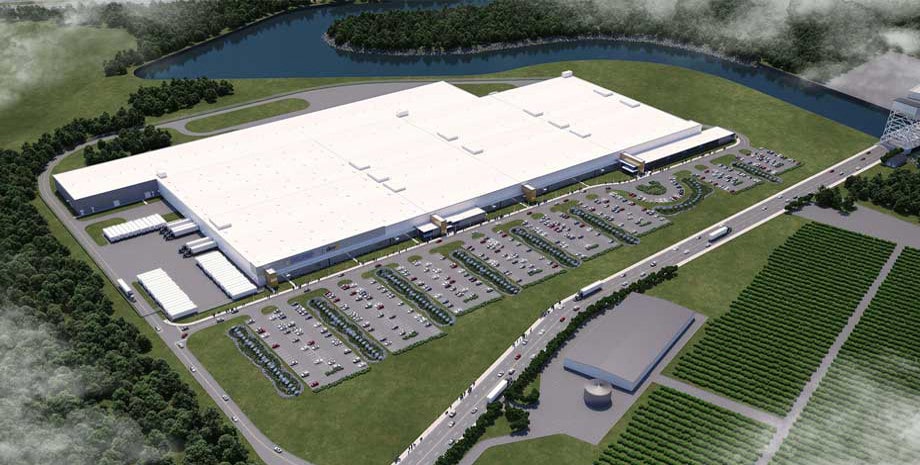According to Tuesday’s Nikkei Asian Review, “Tesla and Panasonic are scrapping their partnership in producing solar cells after years of struggling to ramp up output at the Gigafactory 2 in upstate New York.”
Empire State Development Chair Howard Zemsky immediately issued a response: “Tesla informed us that they have not only met, but exceeded their next hiring commitment in Buffalo. As of today, Tesla said they have more than 1,500 jobs in Buffalo and more than 300 others across New York State.”
Zemsky said that his team will verify the company’s job numbers and that Panasonic’s “action has no bearing on Tesla’s current operations nor its commitment to Buffalo and New York State.”
Late last year, The Buffalo News noted that Tesla employed around 800 people in Buffalo, but the work force needed to grow to 1,460 by mid-April or Tesla could be hit with a $41.3 million penalty by New York state, which spent about $1 billion in taxpayer money to build the factory.
Solar in Buffalo, New York
At one point, Panasonic solar cells, built in Buffalo on jointly-owned equipment, were slated for use in Tesla-built solar panels. Panasonic’s solar cell technology is based on the higher-efficiency (and higher-cost) HIT design.
But no solar panels were ever built in Buffalo.
Tesla ratcheted back its solar installation business significantly and altered the sales process. A solar cell acquisition from SolarCity days, Silevo, was mothballed. (Elon Musk had acquired his cousins’ solar installation and finance company, SolarCity, for about $5.2 billion, including debt, in what was widely viewed as a bailout of a failing company.)
Tesla’s integrated solar roof tile product is starting to be installed in the U.S. but at seemingly a far cry from the 1,000 roofs per week by the end of 2019 that Musk discussed. The Nikkei report said that the Panasonic cells did not work aesthetically in the roof tile and that “the latest version of the solar roof launched last fall uses Chinese cells.”
Tesla CEO Elon Musk has been bullish about solar roof production in Tesla’s factory in Buffalo, New York.
In October of last year, Musk said, “Tesla expects to be producing about 1,000 solar roofs per week in Buffalo within a few months,” adding, “We will grow this exponentially. It might be doubling this every month.”
“This is all going to be produced at the Giga New York, our factory in Buffalo. Musk said, at the time, “It’s really primarily just for the solar glass roof. That’s what our Buffalo factory will focus on.”
But the box still says Changzou
pv magazine has been hunting down these innovative and beautiful integrated solar roofs and documenting the progress of these installations. Here’s a recent photo gallery of solar roof installs.
Most of the boxes at several recent sites originated from Changzou Almaden Co. on Qinglong East Road in Changzou, Jiangzhou, China — 7,135 miles from Buffalo, New York.
We spotted active tiles that were marked as made in the U.S. So, based on our scant evidence, the passive tiles are made in China and the active tiles are made in Buffalo. This has not been substantiated. It’s been reported that the Buffalo factory builds EV chargers and other electrical components.
The Nikkei report notes that Tesla and Panasonic expect to continue their work on automotive batteries.
This content is protected by copyright and may not be reused. If you want to cooperate with us and would like to reuse some of our content, please contact: editors@pv-magazine.com.








“Most of the boxes at several recent sites originated from Changzou Almaden Co. on Qinglong East Road in Changzou, Jiangzhou, China — 7,135 miles from Buffalo, New York.”
So, do these ’tiles’ pay the tariff or not?
“We spotted active tiles that were marked as made in the U.S. So, based on our scant evidence, the passive tiles are made in China and the active tiles are made in Buffalo. This has not been substantiated. It’s been reported that the Buffalo factory builds EV chargers and other electrical components.”
How will this product manage the new 2020 rapid shutdown function when the ’tile’ product is nailed down to the roof? Is there ‘built in’ rapid shutdown somehow incorporated into the tile sections or does the fireman have to hack through the tile product and hope the roof keeps the fireman isolated from a 200 to 300VDC buss? From the pictures submitted, it doesn’t look to me like there is room for a RSD on the ‘connectors’ that snap into the next roof tile assembly. Snapping these single tile units together and nailing them down, seems to make a string panel array that might have around 300VDC on some of the connections. IF there is no onboard RSD module per tile string, then if a fireman hacks through the wrong tiles to gain attic access, he might find 300VDC waiting for him.